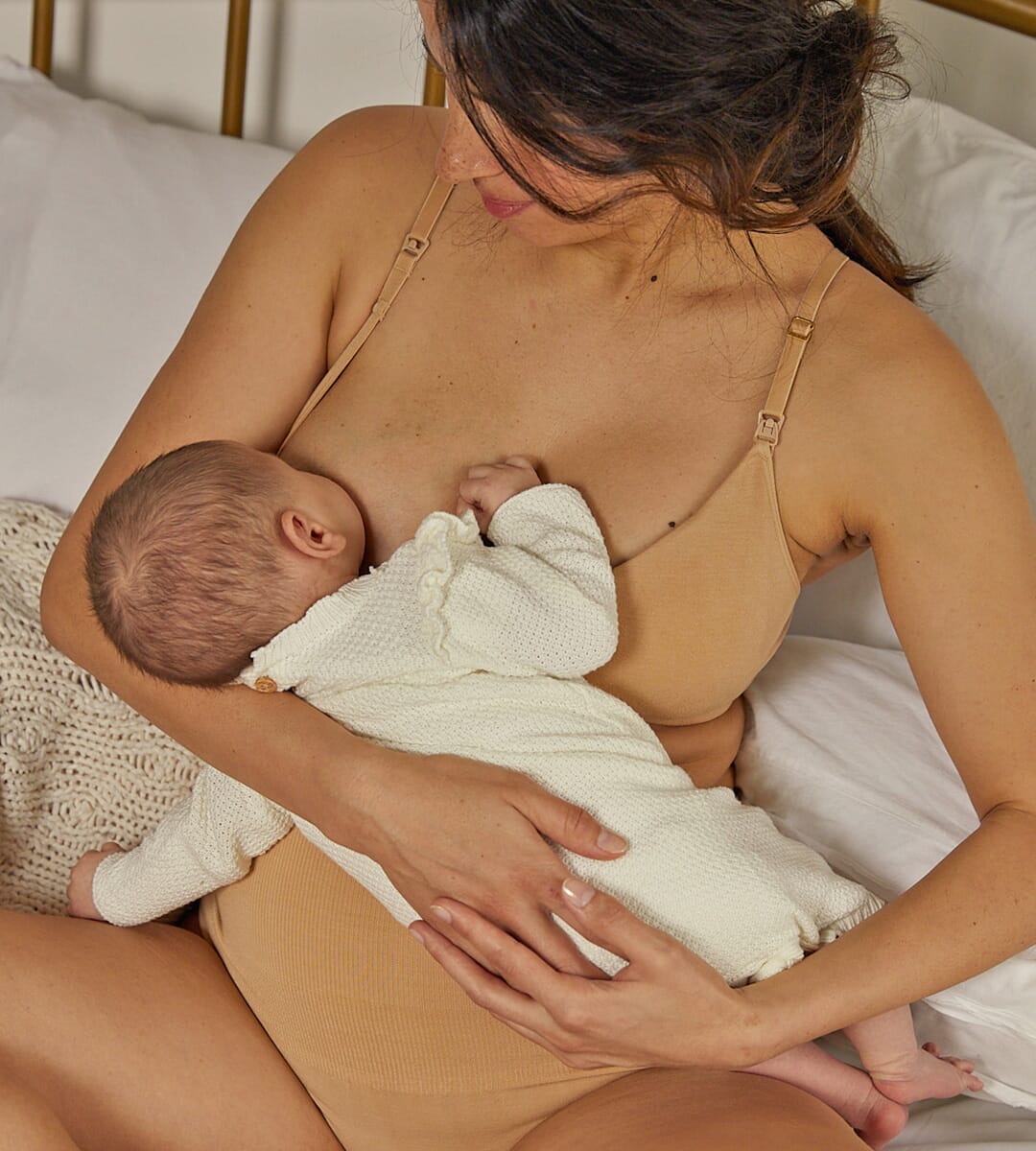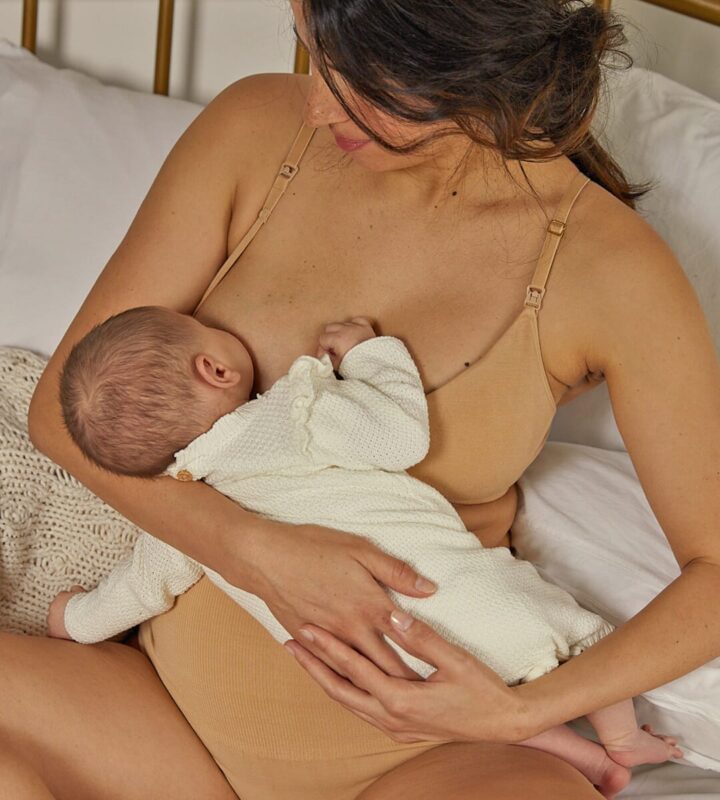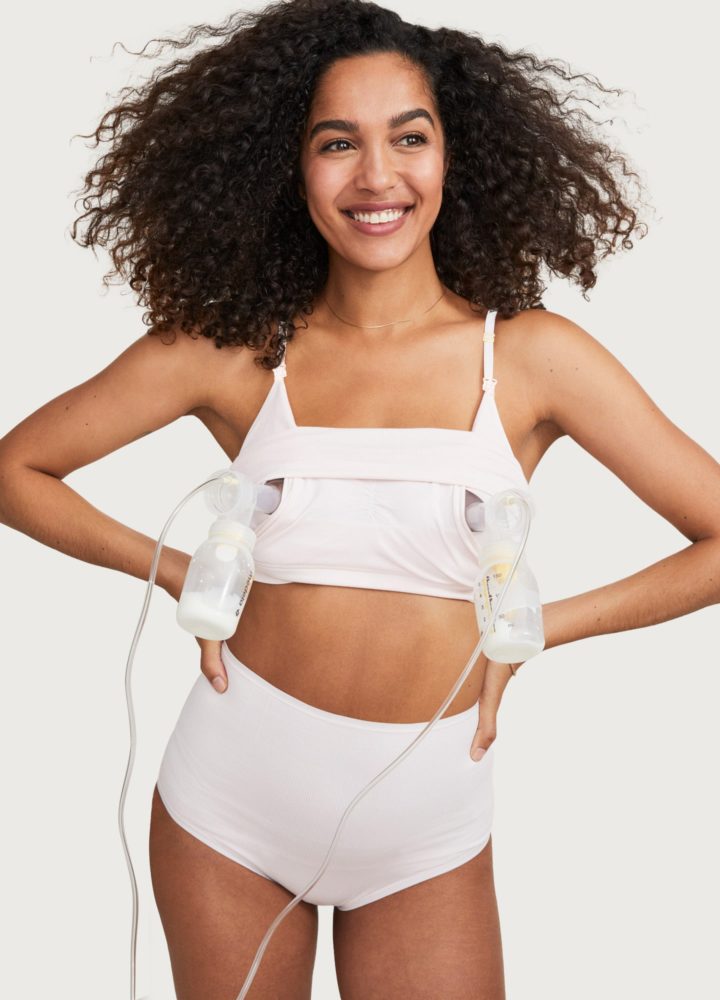Breastfeeding moms know that nursing can be a rewarding part of caring for their newest addition. One-on-one time with your newborn and all that skin-to-skin contact can boost your bond with your little one and feed them all at once. But breastfeeding can also be challenging when you have your first baby.
Perhaps you struggle to get your baby to latch correctly, and breastfeeding tends to be painful. Maybe your milk production isn’t as high as you thought it would be. Or maybe your wardrobe isn’t up to par with your constant need to access your boobs and nurse. Whatever the case may be, don’t sweat it. We’ve polled our community for all the nursing tips to deliver the ultimate list of breastfeeding tips for new moms: You’re welcome.
- Improve Your Breastfeeding Position With Simple Steps
One HATCH mom offers this helpful tidbit:
“If your baby isn’t latched properly, it freaking hurts. Tickle their mouth with your nipple, and once it’s open, you can bring them to your boob for a better latch.”
Latching issues might be frustrating (and sometimes momentarily painful), but they’re actually very common, especially during the first few days of breastfeeding. Even once you’ve gotten into a nursing routine, you might still find your baby latching improperly, which can be painful for you and frustrating for your little one.
Whatever the cause of the latching problem may be — nipple shape, tongue tie, or even a baby still learning how to breastfeed — the key to getting past it is to keep trying new things and know when to ask for help.
First, check that your baby is positioned correctly when breastfeeding for the first time. Correct positioning is a game changer and helps you hit the learning curve faster. Your baby’s nose should be level with your nipple, with their chin touching your breast. (Hint: A breastfeeding pillow can be super helpful for propping your little one up and keeping them in the correct position.)
It might also help to encourage your baby to open their mouth wide before latching on. Like our community member mentioned above, try tickling their lower lip with your nipple to get them to latch properly.
Remember that breastfeeding is a learning process for both you and your baby. Don’t be hard on yourself if things don’t go perfectly initially. Know that you can always seek help from your healthcare provider or a lactation consultant if you need it.
- Account for Mommy Brain
No matter how organized your G-cal is, it’s true: Mommy brain gets even the best of us during the breastfeeding journey.
You know that time you spent 20 minutes looking for the clean burp cloths, only to realize they were in your pocket all along? Yep, that’s pretty normal during the late stages of pregnancy and the fourth trimester. It can be frustrating.
If you are constantly struggling with brain fog, invest in tools to help you stay on top of your life, at least while your hormones are still running crazy. Baby tracking apps are great, but simple things like keeping a planner or using sticky note reminders around the house can help you stay organized and focused.
Friends of HATCH recommend these apps for nursing moms:
“Postpartum brain is real. Get a baby tracking app to keep track of feedings. You can record stats like when you last breastfed, which side, for how long, and more. I like Baby Feeding Log, Feed Baby, and Baby Tracker.”
And remember, the brain fog, forgetfulness, and seemingly wild emotions that might plague you during pregnancy and postpartum are temporary. They won’t last forever, and they certainly aren’t anything to be ashamed of. Think of it as a sign that your body is doing its job: preparing for the baby.
- Prioritize Comfort During Pumping Sessions
“Make a comfortable breastfeeding station where you have everything you need. Mine has an extra water bottle, snacks, my nipple balms, and my phone charger.”
“It seems obvious, but get your breast pump before you give birth. You’ll have time and a clear mind to get properly fitted shields before you have zero time for anything else.”
Pumping tip: Grab a few extra pump parts and have them washed and ready to go before your due date. Extra parts ensure you don’t have to wash anything at 5 AM before you head out to work that day.
A breast pump isn’t the only thing you’ll want to get fitted for before you deliver. Investing in high-quality, nursing-friendly clothes and nursing bras (and breast pads) can make a HUUUGE difference when breastfeeding.
There’s nothing worse than finally stepping out into the world to run errands with your baby before realizing you’ll have to take apart your whole outfit to feed. It’s time to say goodbye to the two-shirt method. No more layering a tank top on top of a tank top to feed your little one while you head to brunch.
Luckily, you have options: The days of wearing frumpy nursing dresses or staying in your PJs all day are over. Although, if you WANT to stay in your PJs all day, you certainly won’t find us judging you. Especially with luxe nursing nightgowns.
These days, you can find stylish nursing-friendly dresses, jumpsuits, and The Nurse-To-Errands Onesie to help you maintain your A+ style while nursing your little one. If you’re thinking about breastfeeding (or being cozy), these pieces are worth the investment.
- Distract Your Baby
Babies will naturally want to grab anything nearby as they grow and develop. Unfortunately, this means your hair, pumping bra, glasses, skin, etc. Help keep your newest addition from ripping out your new highlights or cashmere infinity scarf with the art of distraction — it works for magicians and work for us.
“Give your baby something to play with while nursing with a DIY breastfeeding necklace with giant beads. Anything to keep them from pulling your hair!”
- Store Breast Milk With Care
“Milk savers are another product to catch any precious leaking milk. Save that liquid gold, mama!”
According to the CDC, breastmilk can be stored in the fridge or freezer for an extended period of time. Always follow proper storage guidelines and the advice of your healthcare provider while doing so. Using milk storage bags to store your extra liquid gold can ensure the milk stays sealed and safe.
To warm up breast milk while you’re on the go, bring hot water in an insulated thermos. If you have any questions, reach out to your pediatrician.
- Use Cabbage To Help Prevent Breast Engorgement
“Use cold cabbage leaves to keep from breast engorgement.”
It might sound crazy, but it’s true: Midwives have been using cabbage leaves for centuries to help with the pain and swelling that can accompany breastfeeding. Recent studies have backed that up, showing that cooled cabbage leaves can provide similar pain relief benefits to a warm compress or washcloth.
To use them effectively, chill several cabbage leaves before placing them to cover the whole surface of each breast. If you must multitask or move around during this process, you can slide a loose-fitting bra over the leaves to hold them in place.
Remove them after approximately 20 minutes or once they feel warm rather than cool against your skin.
- Make Breast Milk Pacifiers
Teething babies can be grumpy babies. If you have some extra milk supply, here’s a fun breastfeeding/pumping hack to help your baby smile through the new teeth:
“Buy pacifiers with cover caps, pour the breast milk into the cap, insert the pacifier, and freeze. You’ve got breast milk pacifiers!”
- Be Gentle With Yourself, Especially in the Early Days
It’s no secret that breastfeeding can be challenging, and maybe your let-down can be a letdown at times. Getting your babe to latch correctly, ensuring they’re getting enough milk, and avoiding sore nipples are all part of the process. Don’t be discouraged if it’s tough initially; reach out for help and reward yourself through the process!
Sources:









